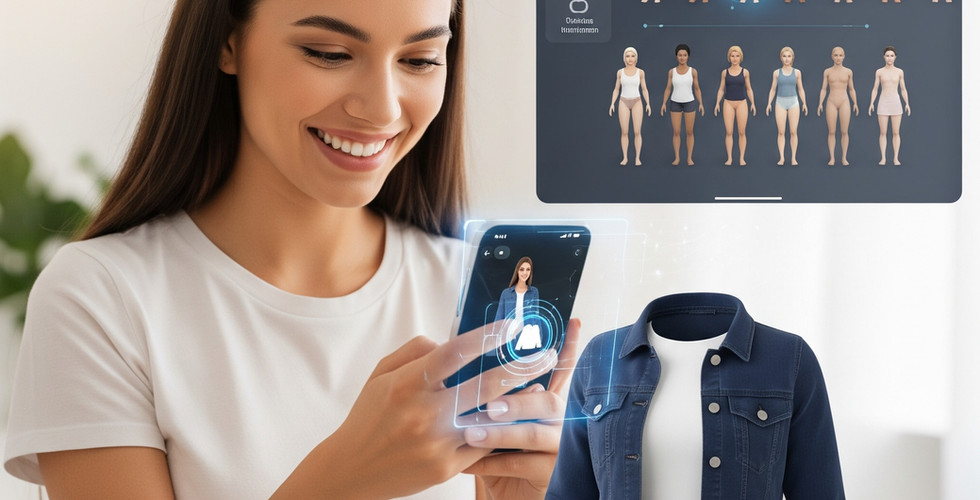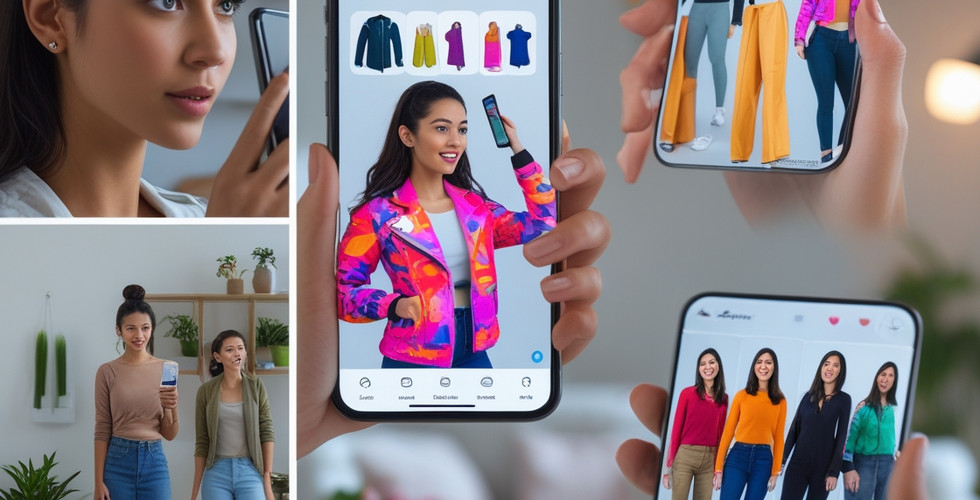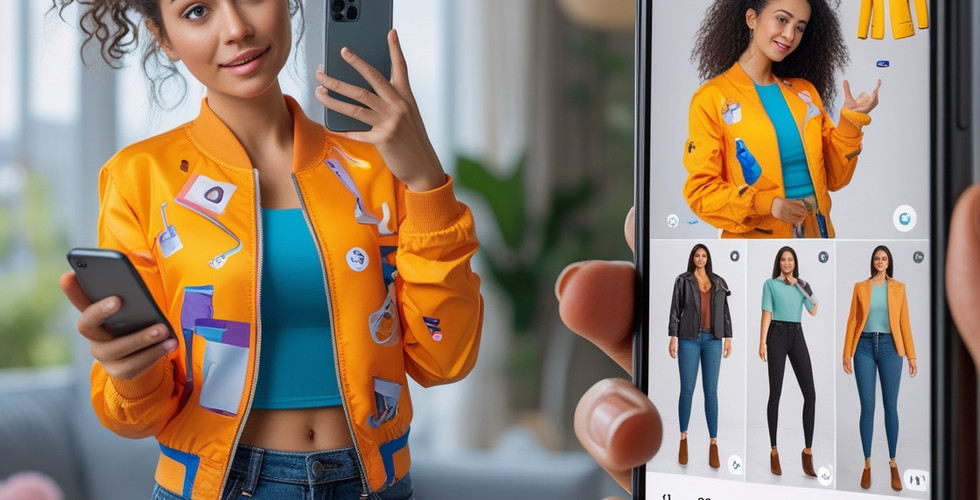Google Comes Out of the Closet: AI-Powered Virtual Try-On Revolutionizes Retail
- Antonio Carlos Faustino

- Jun 30
- 3 min read
Updated: Jul 1
The future of shopping has already begun – and it’s virtual
Imagine being able to try on clothes without leaving your home, using only your smartphone’s camera. This is no longer science fiction: it’s the new virtual try-on feature powered by artificial intelligence launched by Google. The tool has been officially announced to the public in the US and is already starting to shake up global e-commerce.
What is Google AI Virtual Try-On?
The virtual try-on feature uses realistic AI-generated models to simulate how clothes would look on different body types. According to Google itself, the tool is powered by advanced computer vision technology and deep neural networks, capable of recreating details such as the fit, texture and fit of the garment — all based on a single photo of the user.
> “ Our goal is to make online shopping more human and less frustrating ,” says Danielle Buckley, director of product at Google Shopping. (GOOGLE, 2024)
The app is already available in the US at brands such as Anthropologie, Everlane, H&M and LOFT, and allows you to view clothes on different body types, varying in skin tones, sizes and shapes.
Democratization of fashion or covert surveillance?
While the feature promotes inclusivity and accessibility, it also raises debates about privacy, aesthetic standardization, and the use of biometric data. After all, we are handing over our image to AI systems without full control over its subsequent use.
What are the risks?
Personal image storage
Training algorithms without specific consent
Construction of consumption patterns based on physical appearance
According to researcher Shalini Kantayya (2022), “AI technologies applied to body image can reinforce biases and perpetuate stereotypes, especially if they are not built with diversity in mind from the beginning.”
How does the virtual try-on work technically?
The basis of this technology is the so-called generative diffusional model (as used by Google DeepMind), combined with 3D reconstruction techniques.
Steps:
1. The user uploads an image or selects a base model.
2. The algorithm detects key points of the body.
3. Clothing is rendered with texture mapping, drape and realistic lighting.
4. The final image is delivered in seconds.
The AI is trained on millions of images of real clothing and bodies, with continuous learning to improve the fits and realism of the simulations.
The impact on retail in the Americas
The application of AI in the virtual fitting room directly impacts the retail sector throughout Latin America and North America:
Reducing returns: one of the biggest problems in fashion e-commerce.
Increased conversion rate: consumers buy with more confidence.
Inclusion of real bodies: breaking unrealistic beauty standards.
Brands such as Brazilian Amaro and Colombian Studio F are already testing similar technologies and should integrate with Google's tool in the coming years.
Is the consumer the product?
Despite its advantages, Google’s business model is data-centric. Try-on is not just a technological innovation: it is also a tool for collecting massive amounts of visual, behavioral and contextual data.
> “ If it’s free, you’re the product.” – Contemporary digital proverb.
Recommended products (Amazon and Hotmart affiliates)
📦 Physical products (Amazon)
1. Ring Light with Tripod for Cell Phone
Ideal for lighting in virtual tests.
2. LED Lighted Makeup Mirror
Perfect for beauty + fashion simulations.
3. Samsung Galaxy Smartphone with High Resolution Camera
Great for clear selfies in virtual fitting rooms.
🎓 Infoproducts (Hotmart):
1. Digital Fashion and Styling Course with AI
2. Sustainable Fashion E-commerce Guide
Conclusion: Fashion and AI – more style or more surveillance?
Google’s virtual try-on marks a new era in online shopping: hyper-personalization, convenience, and interactivity. But as with all innovation, it’s important to think about who controls the data, who sets the standards, and who profits from the consumer’s image.
Fashion may be digital, but ethics remain analogue.
💬 Did you like this content? Support Bom dia América! Share, comment and consider purchasing through our affiliate links. This way, you help us to continue producing independent and critical content in the Americas.
👉 Support by clicking here
References:
GOOGLE. New Virtual Try-On Tool Launches in Google Shopping. Google Official Blog, 2024. Available at: https://blog.google/products/shopping/ai-try-on. Accessed on: June 30, 2025.
KANTAYYA, Shalini. Coded Bias. Documentary. United States: Netflix, 2022.
MARQUES, Beatriz. Artificial intelligence in fashion: trends and challenges. Estilo Tech Magazine, São Paulo, v. 5, n. 2, p. 12-25, 2024.






















Comments